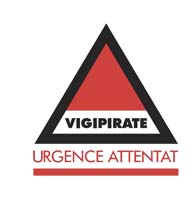The fantastical dimension in the Comédie-Française Repertoire
IN ADAPTING Twenty Thousand Leagues Under the Sea for the theatre, Christian Hecq and Valérie Lesort place themselves squarely in the tradition of fantastical theatre, using ancient theatre techniques including machinery, puppets and lighting effects to represent the unrepresentable.
The theatrical repertoire constantly questions the nature of our relationship to reality through the use of illusion-generating devices that enchant us with their artifice all the better to enlighten us. These devices include machines imported from Italy in the seventeenth century, as well as the use of puppets to replace flesh-and-blood actors. The art of illusion reached its golden age in the seventeenth century thanks to the development of theatrical machinery, particularly at the Hôtel du Marais theatre until 1672. Apparitions, transformations, thefts, glories and special effects fascinated the audience and were used to depict the lives of the great heroes of mythology and the gods, in a dreamlike and spectacular atmosphere. Marine scenes were popular both in the theatre and at court parties. Three actresses from Molière’s troupe appeared perched on whales during the Pleasures of the Enchanted Island in 1664, an entertainment overseen by Molière and for which he introduced Italian machines and sets. Some of the large machine plays of this period were revived the Comédie-Française after 1680, in the early days of the company.
The fantastical bestiary is a constant of the theatrical repertoire and therefore in a certain number of plays performed at the Comédie-Française the actors play animals, but also more fantastical creatures: nymphs, satyrs, furies, Martians, monsters, trolls, fairies, elves and so on. The underwater kingdom of the Undines is the setting for Giraudoux’s play, Ondine, whose staging by Raymond Rouleau with sets and costumes by Chloé Obolensky in 1974 was particularly noted for its luxuriant aesthetics.
Beyond the evocation or representation of fantastical beings, the theatre can attain a philosophical dimension when the action is underscored by a supernatural element, as in the theatre of Shakespeare: spectra, apparitions, witches or statues coming to life, are at the heart of a metaphysical reflection on the imaginary forces that lie beyond us and determine our actions. The supernatural presence embodied by Mephistopheles in Goethe’s Faust also places the human being in the zone between life and death.
On the other hand, the comic quality of the supernatural is represented in the Repertoire through magic, as practiced by man. Real magicians, such as Alcander in Pierre Corneille’s The Comic Illusion, who uses his art to reveal truth, but also authentic charlatans, offer a means of mocking human credulity, from Molière (The Forced Marriage) to Eduardo De Filippo (The Great Magic).
The subtle balance between fantasy and rationality therefore seems to be a characteristic of this theatre, playing on both the public’s wilful collusion and its distance. The adaptation of Twenty Thousand Leagues Under the Sea challenges these traditional devices, in terms of the effects used in the staging, the representation of fantastical creatures and an overall atmosphere that floats ambiguously between real and unreal.
En raison des mesures de sécurité renforcées dans le cadre du plan Vigipirate « Urgence attentat », nous vous demandons de vous présenter 30 minutes avant le début de la représentation afin de faciliter le contrôle.
Nous vous rappelons également qu’un seul sac (de type sac à main, petit sac à dos) par personne est admis dans l’enceinte des trois théâtres de la Comédie-Française. Tout spectateur ou spectatrice se présentant muni d’autres sacs (sac de courses, bagage) ou objets encombrants, se verra interdire l’entrée des bâtiments.
